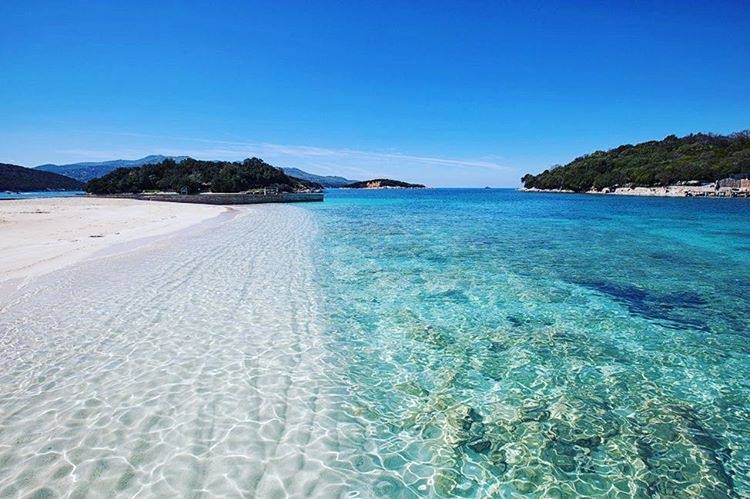Europe has the best offshore wind resources in the world , building a great vision and creating a world that runs entirely on green energy is the future of Europe and the world.
The North Sea holds a vast offshore wind energy potential. Offshore wind is one of the key building blocks for the green transition of Europe. The wind energy scientists’ estimates that the North Seas could supply 100% of Europe’s existing electricity demand. Only 12 hectares artificial Island Denmark is building can supply million homes with electricity.
Energy Ministers from the members of the North Seas Energy Cooperation (NSEC) and the European Commission have today announced a significant increase in their collective ambition in the deployment of offshore renewable energy. At their Ministerial Meeting in Dublin, under the Irish Co-Presidency of NSEC, the NSEC ministers have – for the first time – agreed aggregate, non-binding offshore renewable energy targets for the maritime area of the entire NSEC region.
The nine NSEC countries have agreed to reach at least 260GW of offshore wind energy by 2050. This will represent more than 85% of the EU-wide ambition of reaching 300GW by 2050. Ministers and the Commission reiterated their commitment that cooperation within the NSEC will be the framework for achieving their increased offshore ambitions
The North Sea is a sea of the Atlantic Ocean located between Great Britain, Denmark, Norway, Germany, the Netherlands, Belgium and France with area over 57 million hectares.
Denmark to invest 210 billion Danish crowns in a artificial island, the project is expected to become wind energy hub in the North Sea. ” It will be the largest construction project in Danish history”, Climate Minister Dan Joergensen told a press briefing.
“It will make a big contribution to the realization of the enormous potential for European offshore wind,” Minister Dan Joergensen said.
The new artificial island will supply both clean power to homes and green hydrogen for use in shipping, aviation, industry and heavy transport.
The world’s largest offshore wind project the 3.6-gigawatt Dogger Bank farm in the North Sea announced it will be using the world’s largest turbines to generate electricity for more than 4.5 million homes in the United Kingdom.
The decision came as the EU unveiled plans to transform the bloc’s electricity supply. The bloc aims to rely mostly on renewable energy within a decade while increasing offshore wind energy capacity roughly 25-fold by mid-century.
Europe has enormous potential of wind power
According to the European Parliaments report : Offshore wind is a highly promising renewable energy source that could make a major contribution to global and European efforts to decarbonize the economy by 2050 and keep global warming to around 1.5°C above pre-industrial levels, as set out in the Paris Climate Change Agreement.
The European Commission expects the EU to produce at least 240 gigawatts (GW) of global offshore wind power capacity by 2050, while international organizations’ specializing in the energy field are even more optimistic about the prospects of this energy source.
Europe accounts for 80 % of global offshore wind capacity and is the dominant region in terms of technologies and manufacturing. Offshore wind accounts for 210 000 jobs in Europe and this number should increase further with greater investment.
Wind is the only offshore RES that is currently deployable on a commercial scale and there is vast untapped potential in the world’s oceans and seas, even if only some potential sites can be developed.
Offshore wind has a higher capacity and more consistent output than other variable RES, with the International Energy Agency describing it as a unique ‘variable baseload’ technology that could help to integrate the decarbonized energy systems of the future. A major constraint on offshore wind has been the difficulty of building fixed constructions in depths greater than 60 meters.
Floating bases for offshore wind turbines could then prove to be a game changing technology, allowing much wider exploitation of wind resources. Many of the leading projects for commercializing these floating technologies are based in Europe.
Hybrid projects linking offshore wind to other uses – such as hydrogen production or battery storage – represent another important avenue for offshore wind to contribute more widely to our energy systems. The Commission is expected to adopt a new strategy for offshore RES proposing further EU action to scale up deployment of offshore wind and invest in its underlying technologies.
Some EU Member States have set their own indicative targets for offshore wind deployment by 2030, accompanied by a range of support schemes. The European Parliament has been supportive of offshore wind energy, in particular the potential for a North Sea offshore grid.
Discover more from Green Innovation News
Subscribe to get the latest posts sent to your email.





